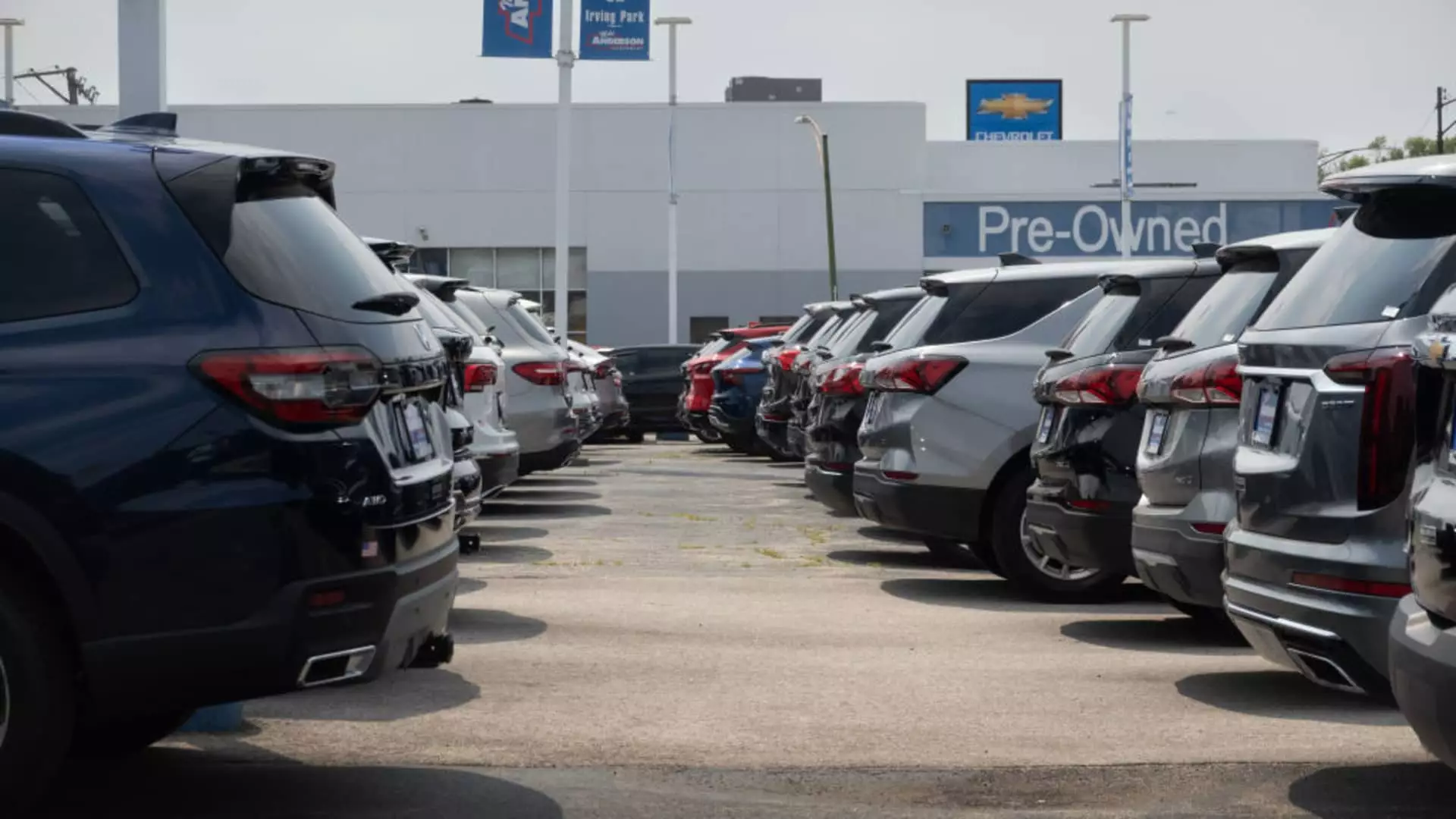In a disconcerting development for many American car owners, recent reports reveal that the number of individuals with auto loans exceeding the value of their vehicles is escalating. A study conducted by Edmunds.com has unveiled that the average negative equity for such loans reached a staggering $6,458 in the third quarter of this year—up from $6,255 in the previous quarter and significantly increased from $5,808 just one year prior. This alarming trend hints at growing financial pressures on consumers, a situation exacerbated by the overall economic landscape.
While owing more than a vehicle’s worth—an inverted loan situation—is not inherently catastrophic, the current statistics suggest a worrying shift in consumer stability. A significant number of borrowers are now faced with negative equity, where over 20% of consumers with such loans owe more than $10,000, and a concerning 7.5% are grappling with amounts exceeding $15,000. These figures aren’t just numbers; they represent real-life implications for households striving to manage their financial situations. Jessica Caldwell from Edmunds has pointed out that while owing a small amount above vehicle value may not be catastrophic, larger amounts certainly raise red flags about the overall economic wellbeing of consumers.
Further exacerbating the situation is the increase in delinquency rates in auto loans, which have now surpassed pre-pandemic levels. This trend, reported by the Federal Reserve, underscores the financial distress many automotive consumers face today. Although historically low delinquency rates were observed during the pandemic’s height—likely as many consumers received governmental support—such a dramatic resurgence indicates growing vulnerability. As economic pressures mount, consumers may find it increasingly challenging to meet their financial obligations.
To combat the challenges posed by such adverse loan circumstances, consumers might consider several strategies. One effective approach is retaining ownership of their vehicles for an extended duration, allowing time for depreciation to stabilize and equity to build. Moreover, maintaining regular vehicle upkeep can help diminish maintenance costs that could otherwise contribute to increased depreciation. Ivan Drury, also from Edmunds, emphasizes the importance of consumers reassessing not just the monthly payments, but their long-term ownership plans, particularly when faced with significantly lengthy loan terms.
The current spike in upside-down auto loans speaks volumes about the economic challenges faced by American consumers in today’s financial climate. With the rapid appreciation in vehicle prices and rising interest rates, the reality of negative equity looms large. First-time buyers, particularly those who purchased vehicles at inflated prices during 2021 and 2022 due to pandemic-related scarcity, now confront the risk of substantial financial losses as vehicles depreciate faster than anticipated. As this troubling phenomenon continues to unfold, both consumers and lenders must adapt their strategies to safeguard against further financial strain in an evolving automotive market.

Leave a Reply